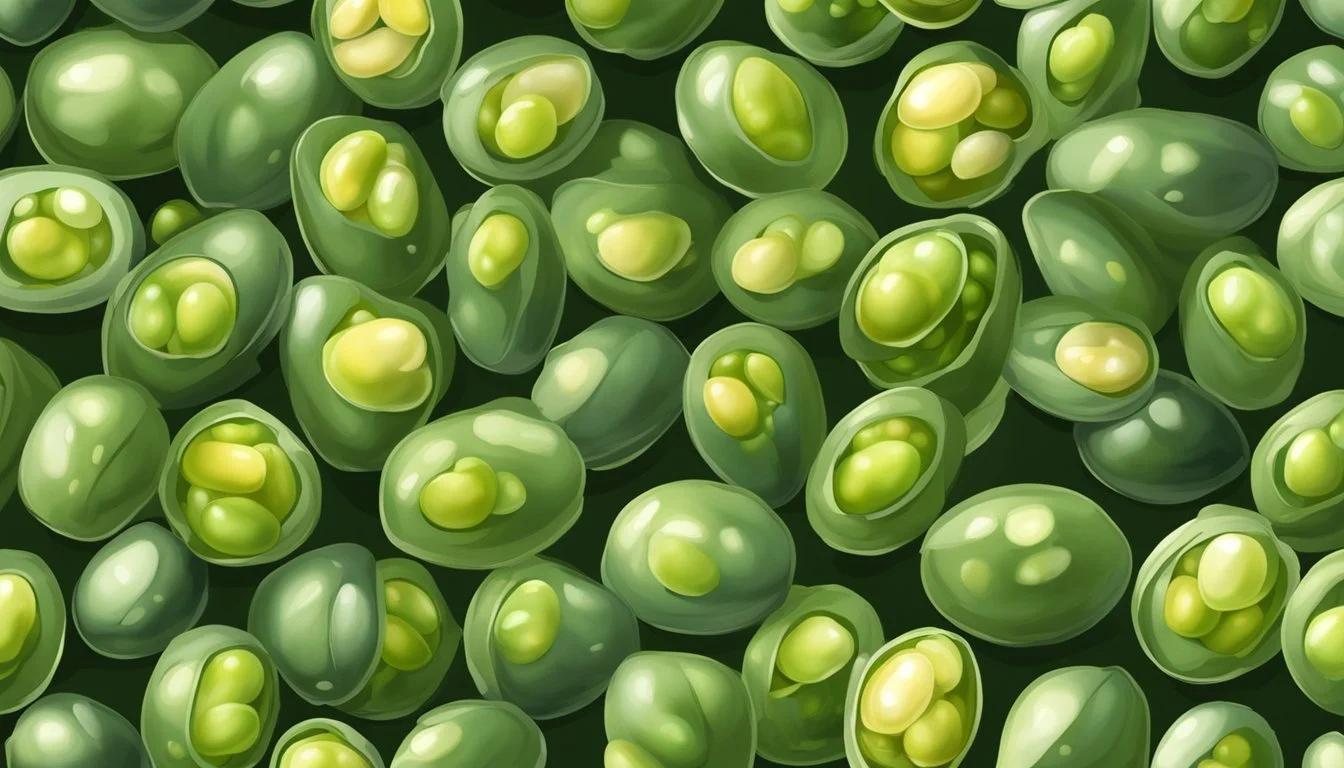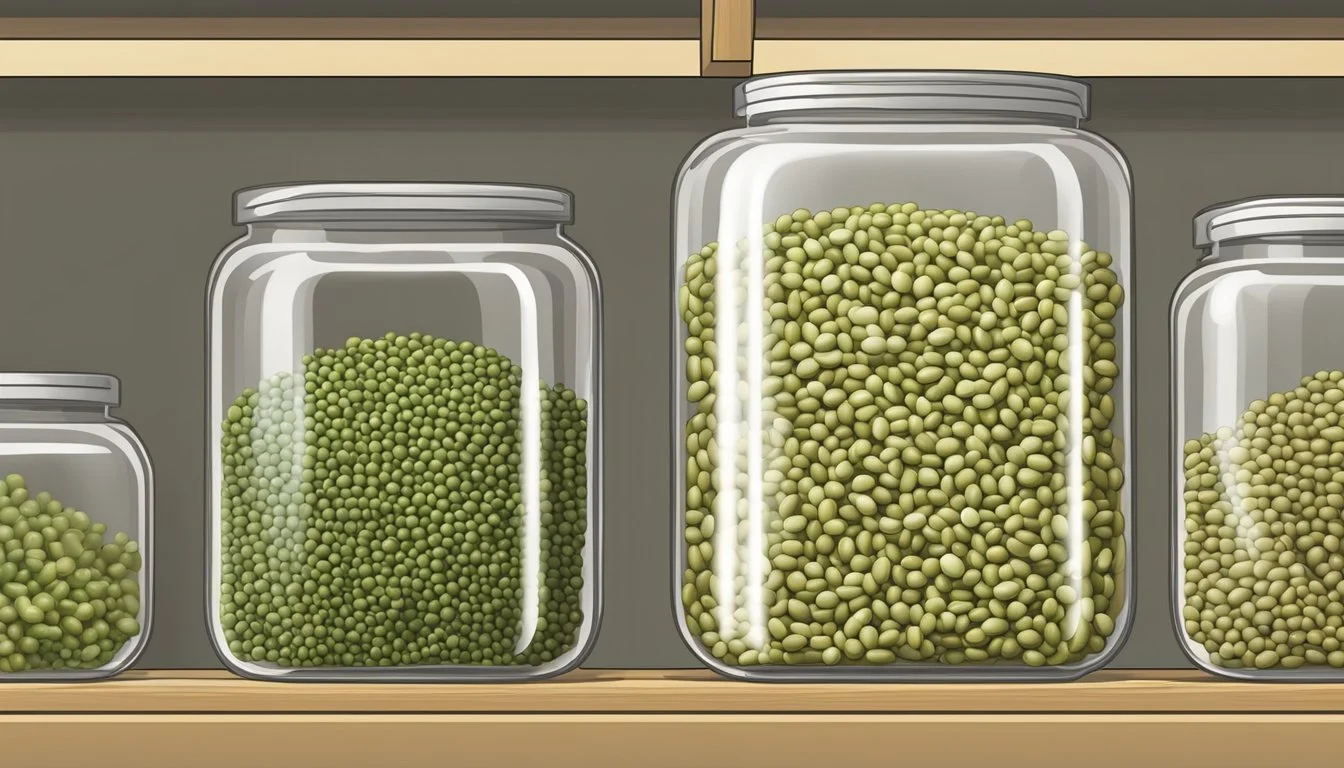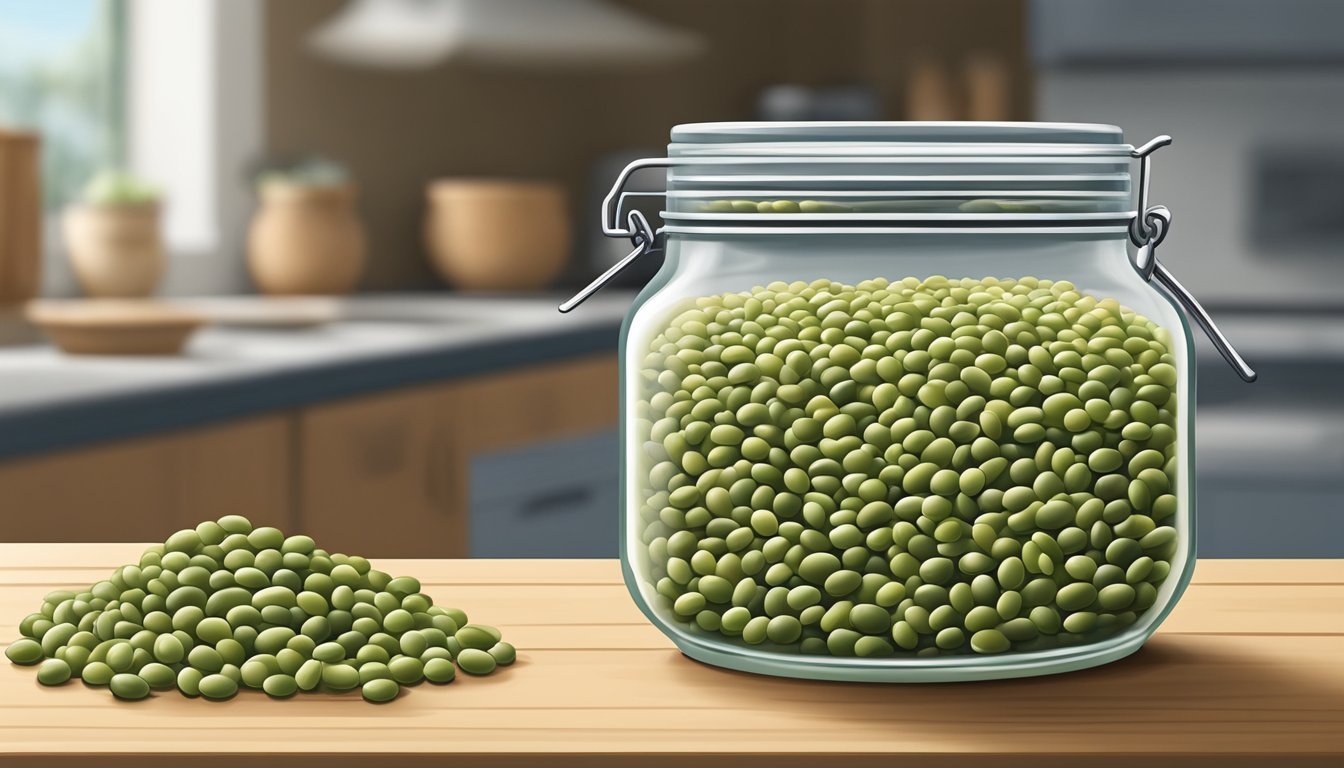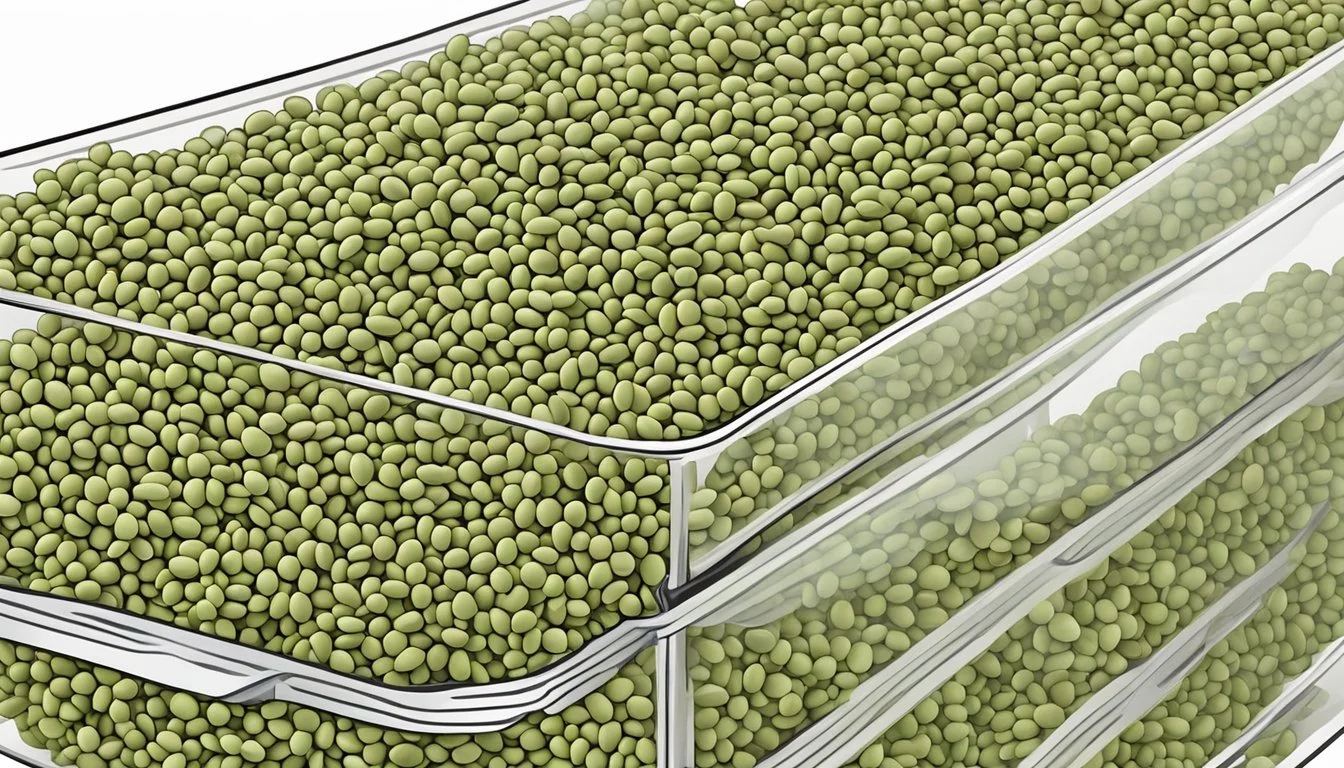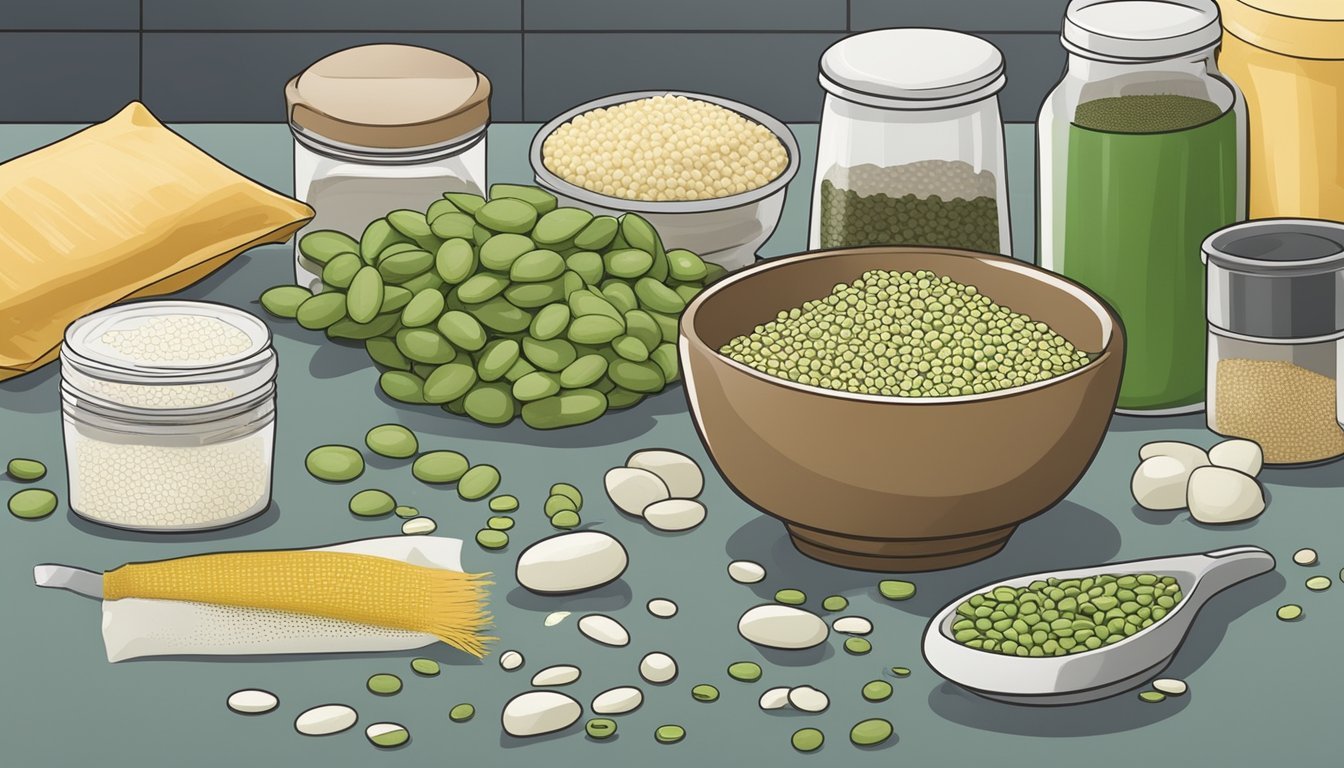Does Mung Beans Go Bad?
Storage Tips and Shelf Life
Mung beans, like many dry legumes, have a long shelf life, making them a pantry staple. Dried mung beans, when stored properly, do not go bad in the traditional sense. They may lose quality and flavor over time, particularly after a few years. However, they remain safe to eat if kept dry and away from excessive heat and moisture.
Once cooked, the shelf life of mung beans changes drastically. They should be refrigerated within two hours of cooking and can last in the fridge for 3-5 days. To extend their usability, freezing cooked mung beans preserves their quality for up to six months, ensuring that they remain a nutritious addition to meals for a longer period.
Ensuring proper storage of both dried and cooked mung beans is crucial for maintaining their quality and nutritional value. This makes it easier to incorporate these nutrient-rich legumes into your diet regularly, without having to worry about spoilage.
Understanding Mung Beans
Mung beans, a member of the legume family, are valued for their nutritional benefits and versatile culinary uses. They pack a punch with essential nutrients, making them a popular choice in many cultures, especially in Asian countries.
Nutritional Profile of Mung Beans
Mung beans are a nutritional powerhouse. They are rich in protein, providing a plant-based alternative to meat. This makes them popular among vegetarians and vegans. With a significant amount of dietary fiber, they aid in digestion and help maintain a healthy weight. They contain various vitamins, including B vitamins, and essential minerals like iron, magnesium, and potassium.
Mung beans also possess antioxidants that combat oxidative stress in the body. They are low in calories and carbohydrates, making them an excellent option for those watching their caloric intake. Their nutrient profile supports overall well-being and can contribute positively to a balanced diet.
Culinary Uses of Mung Beans
Mung beans are incredibly versatile in the kitchen. When cooked, they become soft and tender, ideal for soups, stews, and curries. In many Asian countries, mung beans are used in both savory and sweet dishes. Mung bean sprouts are commonly found in salads, stir-fries, and as a garnishing ingredient due to their crunchy texture and fresh taste.
They can also be made into a paste, which is used in traditional desserts and snacks. For example, in some cultures, mung bean paste is a key component in mooncakes and pastries. Their mild flavor allows them to blend well with various spices and ingredients, making them a staple in numerous culinary traditions.
Signs of Mung Beans Going Bad
Mung beans can show clear indicators of spoilage through visual changes, texture, smell, and taste. Recognizing these signs is crucial to ensure that the beans are safe for consumption.
Visual and Texture Changes
Mung beans that have gone bad often exhibit discoloration. Fresh mung beans are usually green and consistent in color. Spoilage may turn them yellow, brown, or even black. Mold growth is another clear sign.
Texture changes indicate spoilage too. Healthy beans are firm. As they spoil, they become soft and mushy. Additionally, the presence of bugs or weevils within the beans is a red flag for contamination.
Odor and Taste Alterations
Fresh mung beans have a neutral smell. If they develop a sour smell or any unusual odor, they are likely spoiled. This odor often results from bacteria or mold growing on the beans.
On tasting, spoiled mung beans will not have their usual sweet taste. Instead, they may taste bitter or off. A change in taste is a definitive sign that the beans should no longer be eaten.
Factors Affecting Shelf Life
The shelf life of mung beans can be influenced by several factors, primarily focusing on storage conditions and the impact of light and temperature.
Proper Storage Conditions
Proper storage conditions are essential to maximizing the shelf life of mung beans, especially dried mung beans. These beans should be stored in an airtight container to protect them from humidity and oxygen, both of which can accelerate spoilage.
Keeping mung beans in a cool, dry, and dark place helps ensure they remain non-perishable for an extended period. Retaining the beans in their original packaging or transferring them to an airtight container reduces the risk of exposure to moisture and other environmental factors that can lead to spoilage.
Humidity is a significant factor in the deterioration of mung beans. High humidity levels can cause the beans to absorb moisture, encouraging mold growth and making them unsuitable for consumption. An environment with low humidity is, therefore, critical to maintaining the quality and shelf life of the beans.
Impact of Light and Temperature
Exposure to light and temperature fluctuations can significantly impact mung beans' shelf life. Direct sunlight can degrade the quality of the beans, so it is best to store them in a dark place to avoid exposure to light.
Temperature stability is also crucial. Mung beans should be kept at a consistent, cool temperature to avoid the risk of heat stroke, which can damage the beans and reduce their shelf life. Excessive heat can cause the beans to dry out further and may compromise their nutritional value and texture.
Overall, maintaining a stable temperature without significant fluctuations helps ensure the mung beans stay fresh and retain their quality for as long as possible.
Safe Handling and Preparation
Proper handling and preparation of mung beans are essential for food safety and optimal taste. This involves specific steps for preparing the beans before cooking and ensuring they are cooked and consumed safely.
Preparation Before Cooking
Sorting the mung beans is the first critical step. Spread the beans out on a clean, dry surface and pick out any debris or damaged beans.
Rinsing follows sorting. Place the beans in a strainer and rinse them under cold running water to remove any dust or dirt.
The next step is soaking. Mung beans should be soaked in water for at least 4 hours or overnight. This softens the beans and reduces the cooking time.
After soaking, it’s important to drain and give them a final rinse. Ensure they are cleaned thoroughly to avoid any contamination.
Cooking and Consumption
Cooking mung beans requires careful attention to achieve the best results. Start by using fresh, clean water for cooking and bring it to a boil before adding the beans.
Simmer the beans until they reach the desired texture, which usually takes about 30-40 minutes. This may vary depending on the soaking time.
Once cooked, ensure the mung beans are consumed within 3-5 days if stored in the refrigerator.
When serving, avoid cross-contamination by using clean utensils and properly washed hands. Only reheat portions that will be consumed to maintain food safety.
Preventing Foodborne Illness
To avoid foodborne illness when handling and consuming mung beans, understanding the causes of spoilage and recognizing symptoms of food poisoning are essential.
Understanding Bacteria and Spoilage
Mung beans can harbor harmful bacteria such as Salmonella, E. coli, and Listeria. These bacteria thrive in moist, warm environments, making improperly stored mung beans especially vulnerable. Expired mung beans, particularly if they have surpassed their "best by" or "use by" dates, pose a higher risk.
Proper storage can significantly reduce these risks. Keep dry mung beans in a cool, dry place. Once cooked, refrigerate them within two hours and consume within 3-5 days. Freezing is an option for longer shelf life, up to six months.
For pregnant women, children, and those with weakened immune systems, caution is advised. They should avoid eating raw mung bean sprouts, as these are more susceptible to bacterial contamination. Ensuring thorough cooking can kill most harmful bacteria, reducing the risk of foodborne illness.
Symptoms of Food Poisoning
Food poisoning from mung beans can lead to symptoms such as fever, nausea, vomiting, and diarrhea. These symptoms can appear anywhere from a few hours to several days after consuming contaminated beans.
Pregnant women, elders, and individuals with compromised immune systems are particularly vulnerable. Immediate medical attention might be necessary if symptoms are severe or persistent. Recognizing these signs early can prevent complications and ensure timely treatment.
Keeping an eye on the expiration dates and following strict hygiene and storage practices can prevent these unpleasant and potentially serious health issues.
Long-Term Storage Solutions
Storing mung beans for the long term requires specific techniques to keep them fresh and nutritious. Effective drying and freezing methods, along with the use of preservative methods, play a crucial role in extending their shelf life.
Drying and Freezing Techniques
Dry mung beans stored in a cool, dry place in an airtight container, like a plastic bag or #10 can, can retain quality for up to 3 years. To prepare beans for long-term storage, ensure they are completely dry to prevent mold growth. Drying beans thoroughly before storage helps in maintaining their quality.
Freezing mung beans further extends their shelf life. Place dried beans in freezer bags and remove as much air as possible before sealing. This process minimizes exposure to moisture and air, which can degrade the beans over time. Freezing beans in small portions makes it easier for later use.
Utilizing Preservative Methods
For extended storage beyond a few years, store mung beans in Mylar bags with oxygen absorbers. These bags offer excellent protection against light and atmospheric gases. The oxygen absorbers remove oxygen from the bags, slowing the degradation process and preserving the beans for up to 30 years.
Additionally, storing beans in #10 cans is another effective method. These cans are designed for long-term food storage and provide a durable and airtight environment. When stored at room temperature and away from direct sunlight, dried beans in these cans stay safe for decades.
By utilizing these techniques, mung beans can be stored effectively for very long periods, maintaining their quality and nutritional value.
Health Benefits and Concerns
Mung beans provide substantial nutritional value, contributing to overall health, but they also come with potential concerns such as allergies and digestive discomfort.
Diet and Nutrition
Mung beans are nutrient-dense legumes rich in proteins, fibers, vitamins, and minerals. A single cup of cooked mung beans contains approximately 14.2 grams of protein and 7.6 grams of dietary fiber, supporting muscle repair and healthy digestion. They are also a notable source of B vitamins, essential for brain function and energy production.
The high fiber content in mung beans promotes gut health by fostering a beneficial environment for gut bacteria. Additionally, these legumes help in weight management and reducing cholesterol levels, while their low glycemic index makes them suitable for people with diabetes.
Allergies and Sensitivities
Some individuals may experience allergic reactions or sensitivities to mung beans. Common allergen symptoms include itching, swelling, and gastrointestinal discomfort. It is crucial for those with known legume allergies to approach mung beans cautiously.
Certain compounds in mung beans might cause digestive issues like bloating or gas in susceptible individuals. Ensuring proper cooking can mitigate these effects. If new to consuming mung beans, one might start with small portions to assess tolerance.
Versatility in Recipes
Mung beans are highly adaptable and can be used in a variety of culinary applications, ranging from fresh sprouts in salads to hearty beans in main courses. They offer unique textures and flavors, enhancing both simple and complex dishes.
Incorporating Sprouts
Mung bean sprouts are popular in many cuisines due to their crunchy texture and mild flavor. Salads benefit from their addition, providing a refreshing contrast to other ingredients. These sprouts can also be stir-fried quickly with vegetables for a light side dish.
In Chinese cuisine, mung bean sprouts are often used in spring rolls and stir-fry dishes, adding crunch and nutrients. They're also great in sandwiches and wraps, serving as a healthy textural component.
Beans in Main Courses
When used whole, mung beans are often cooked in curries and stews. They absorb surrounding flavors well, making them ideal for spiced dishes like Indian dal. In soups, they provide a hearty texture and are excellent in vegan and vegetarian recipes.
Mung beans can also be used in savory pancakes, combined with ingredients such as kimchi and vegetables. Canned mung beans offer convenience and can be incorporated into chili and casseroles easily, saving preparation time without sacrificing nutrition. These beans can also be puréed for dips and spreads, offering versatility in various cuisines.
Frequently Asked Questions
Do mung beans go bad?
Yes, mung beans can go bad. Uncooked mung beans have a long shelf life but will eventually spoil if stored improperly.
How long do they last?
Uncooked: Up to a year in a cool, dry place.
Cooked: 3-5 days in the refrigerator.
Frozen: Up to 6 months.
What are signs of spoiled mung beans?
Spoiled mung beans may have an off smell, discoloration, or mold growth. Cooked beans will also become slimy or develop a sour odor.
Can expired mung beans make you sick?
Yes. Eating expired mung beans can lead to foodborne illness, presenting symptoms like nausea, vomiting, and diarrhea.
How should mung beans be stored?
Store uncooked beans in an airtight container in a cool, dry place. Cooked mung beans should be kept in the refrigerator within two hours of cooking and stored in airtight containers.
Is it necessary to soak mung beans before cooking?
Soaking mung beans before cooking softens them, reduces cooking time, and helps minimize anti-nutrients.
How can I extend the shelf life of cooked mung beans?
To extend the shelf life, freeze the cooked mung beans in an airtight container. They can be stored for up to 6 months while maintaining quality.
How should mung beans be thawed?
Thaw frozen mung beans in the refrigerator overnight or use the defrost setting on a microwave. Do not refreeze once thawed.


